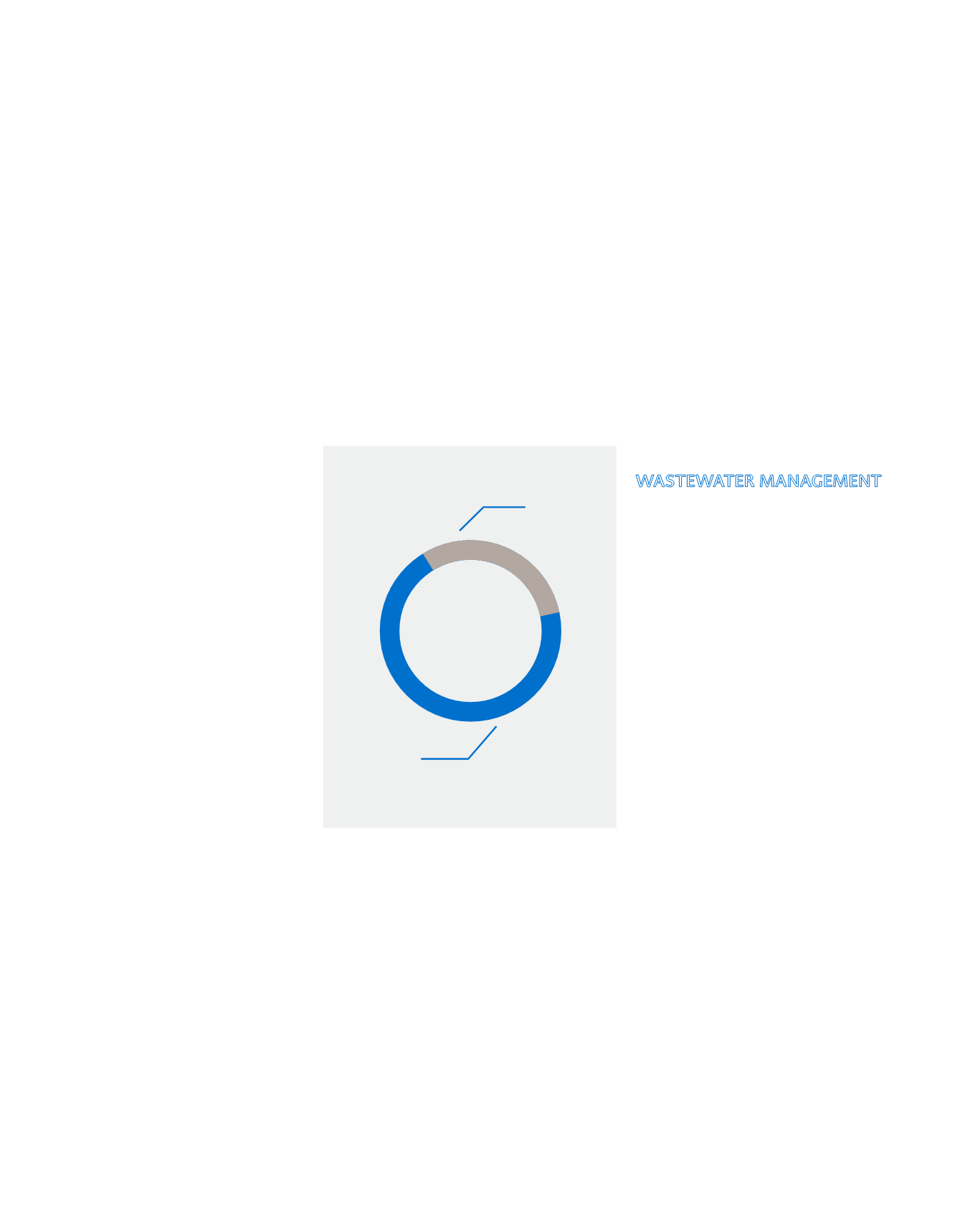

where it is abundant, of high quality
and safe (based on parameters defined
in international standards).
Beforeit isdistributed, thewaterprocured
is suitably treated, disinfected and
made safe to drink.
The use of water for all the routine
activities on board (e.g. cleaning of
cabins and public areas, management
of pools, food preparation etc.) is
governed by structured management
processes. The Company believes that
reducing water consumption is a key
element of responsible environmental
management; importantly, it also means
reduced demand for supplies of water in
the ports of call.
9
Sewage is intended to mean flush water
and liquid waste.
The overall consumption of water,
which is directly proportional to fleet
expansion and growth in the number
of passengers carried, increased by 9%
in 2015, whereas average consumption
was practically unchanged at 221 liters
per person per day.
WASTEWATER MANAGEMENT
The types of wastewater produced on
board are bilge water, gray water, ballast
water and sewage
9
. Efficient wastewater
treatment and management is a vital
issue, in relation both to the impacts
generated directly on the marine
environment and to the protection of
the health and safety of workers. For
this reason Costa Cruises has adopted
a series of very restrictive measures,
deliberately designed to go beyond
international regulatory requirements.
The table on page 53 provides
details of the
shipboard wastewater
management system
.
Despiteall themeasuresandprecautions
taken, it is always possible that a spill or
discharge of wastewater constituting
an environmental incident may occur
(at sea or in port). There were 3 spills
of mineral oil or fuel that occurred in
2015 and all three were minor incidents
dealt with by the shipboard personnel,
who are regularly trained to take all
possible steps to clean up and minimize
the environmental impact of a spill in
line with Company procedures. In any
69%
WATER
PRODUCED
31%
WATER
SUPPLIED
















